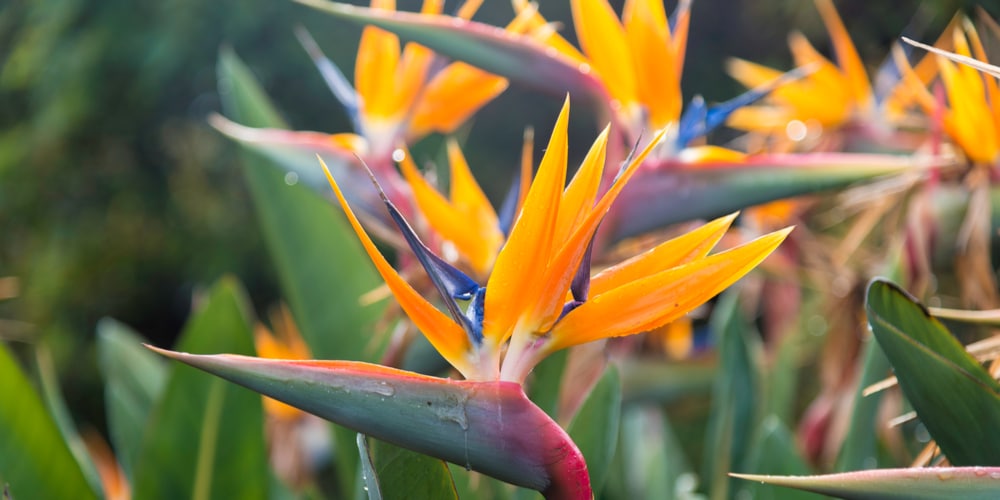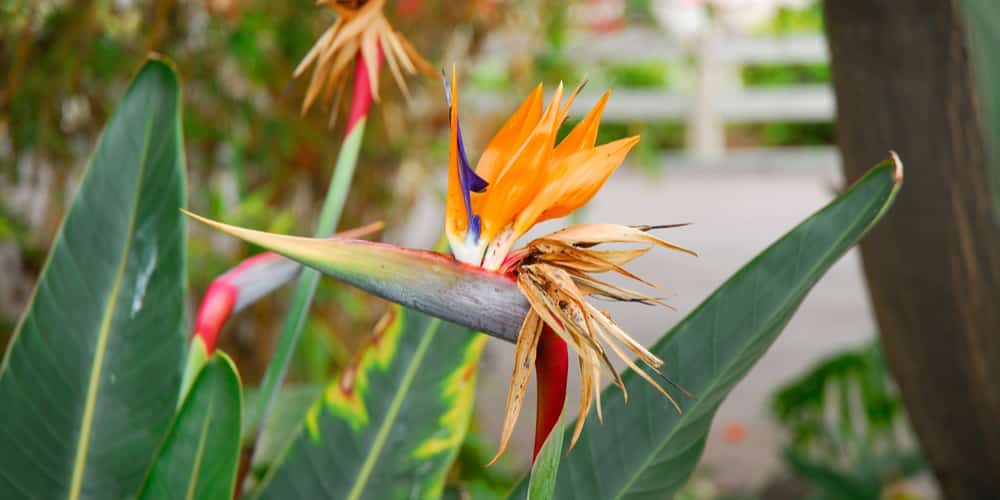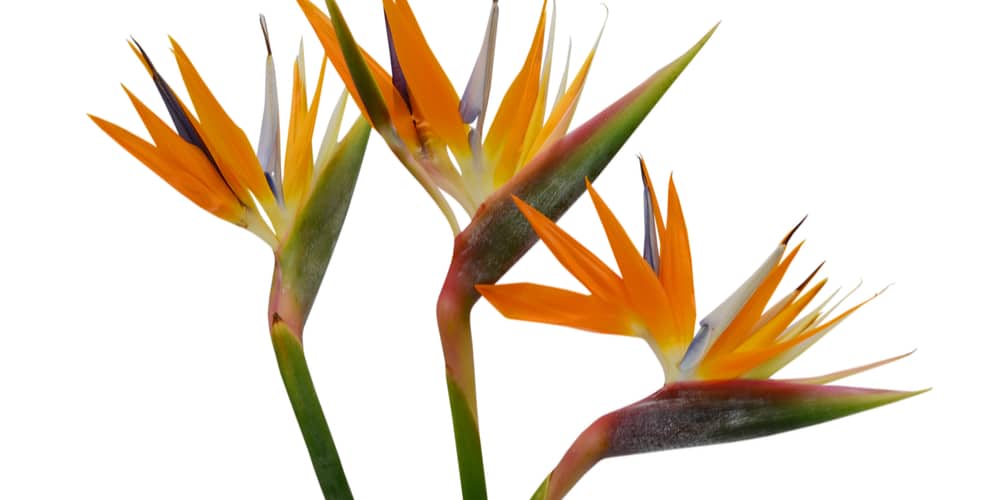If a single plant could symbolize a rhyme between exotic and subtropical hues, then the orange bird of paradise could perfectly fit. The orange bird of paradise plants can be described as unique nature’s perfect work of amazing flowers. These gorgeous flowers of the bird of paradise resemble a flight bird or a crested bird’s head topping on long stems. Here’s our orange bird of paradise care guide.
| Botanical Name | Strelitzia reginae |
| Common Name | Orange bird of paradise |
| Plant Type | Perennial |
| Flower Color | Orange bird-shaped blooms |
| Size When Mature | 48 inches tall and 56 inches wide |
| Bloom Time | Fall up to spring |
| Sun Requirements | Full/ Partial Sun |
| USDA Hardiness Zones | USDA zone 10-12 |
| Soil PH Range | 5.6 – 8.5 |
| Soil Type | Well draining, acidic to alkaline soils |
| Water Needs | Medium |
| Native Area | South Africa |
Are you considering adding an orange bird of paradise to your flower garden? Orange bird of paradise plants are low-maintenance. However, caring for them is essential for them to thrive. This article will cover more details about the orange bird of paradise and how to care for it.
Orange bird of paradise care guide
Orange bird of paradise is an easy-to-grow houseplant that will benefit your house garden with beautiful orange flowers during the blooming season. And while the blooms may not manifest every season, this does not mean they will not flower again—when the warmth and light are enough, the plants will bloom.
Typically, these plants take 3-5 years before they start blooming. The best blooming time ranges anywhere from fall up to early summer.
The orange bird of paradise (Strelitzia reginae) is native to South Africa and grows naturally in tropical forests. It is slightly toxic to humans, and unintentional consumption can lead to diarrhea and vomiting.
The plant grows in a clumping form with thick gray-green leaves on straight graceful stems. Their elegant foliage blends well with most neutral house aesthetics, and when combined with the orange blooms, it can be used to create a focal point in a landscape where it will showcase its unique beauty.
Notably, orange bird of paradise plants are slow growing and will grow up to 48 inches tall and 56 inches wide.
How to care for the orange bird of paradise plants
Here is everything you need to know about growing and caring for the orange bird of paradise plants.
Light
Orange bird of paradise plants prefer bright indirect light but can endure full sunlight. They can grow taller and have dark green leaves if provided with enough light. If indoors, they should be exposed to bright indirect light at the windows or doorway.
Inadequate light impedes the plants’ ability to bloom, which explains why most indoor orange bird of paradise plants fail to produce blooms. Moreover, improper lighting may also prevent the leaves from growing as big as they should.
For the best result, place your bird of paradise plants where they can get six hours of direct or bright indirect sunlight.
Soil and Water
Orange bird of paradise plants grow best in well-draining acidic or basic soil, preferably with a pH between 5.6 and 8.5. If you need to pot the plant, you can use lava rocks or perlite, as they provide the best growing conditions and aeration.
As for watering, water your plants once a week to encourage optimal growth but ensure the soil dries out between waterings. Of significance, if your orange bird of paradise plants are in an area that receives plenty of direct light, you will need to water more frequently to compensate for water lost through trans-evaporation.
Temperature requirements
Orange bird of paradise prefers cool to warm temperatures. They do best when the day temperatures range between 65 to 70 degrees Fahrenheit and night temperatures between 50 to 55 degrees Fahrenheit. It grows best in USDA hardiness zones 10 – 12, which are known to receive more light.
Fertilizer
Orange birds of paradise plants are heavy feeders. Apply a liquid fertilizer frequently during the growing season and reduce fertilizing once the plant roots are established in the soil.
You can also mix the planting soil with organic compost to help slowly release nutrients to the plants throughout the growing season. Fertilizing speeds up the growth rate of these prominent slow-growing plants.
Common diseases
Orange bird of paradise plants are susceptible to any severe diseases but may suffer root rot when overwatered.
Regarding pests, they are susceptible to mealybugs and spider mites, which will lead to yellowing, wilting, and at times destroying the plant leaves.
Propagation
Propagating orange bird of paradise plants as seedlings can be difficult because they will take at least 3 years to bloom. You can propagate the plant using division by simply separating the plant and reporting the separate parts. However, it will take a lot of time for the plant to heal from the division.
Related Article: Flowers That Look Like Birds



